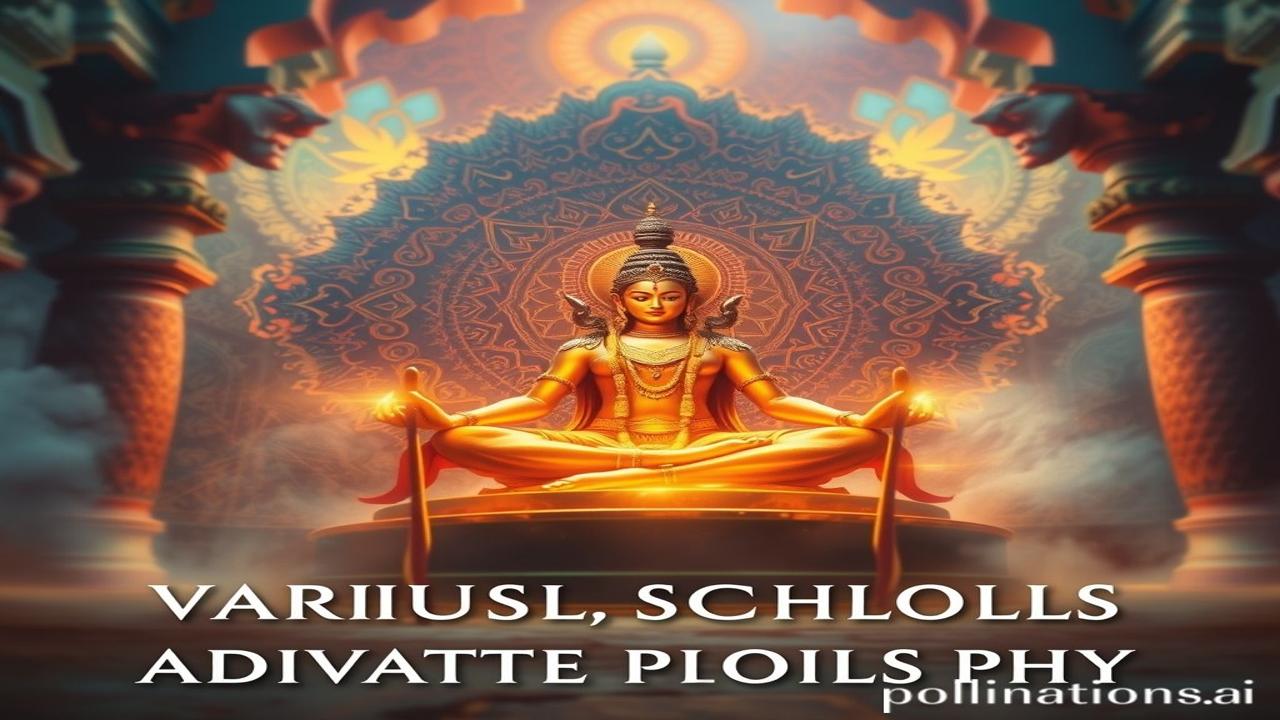Advaita Ki Dhun: Exploring the Harmonious Schools of Non-Duality
Kabhi socha hai, Ganga ke kinaare baithe kisi sanyasi ki aankhon mein kaunsa raaz chhupa hota hai? Woh raaz hai Advaita, non-duality, jahan jeev aur Brahman ek ho jaate hain. Waqt ki dhool mein chhupi ye kahani, ek gehrai hai jismein hamari Bharatiya sanskriti ki aatma basa hai. Let’s dive into the fascinating world of Advaita and its various schools!
The Essence of Advaita: Ek hi Sach, Kai Raste
Advaita, meaning “non-duality” in Sanskrit, is a philosophical school that posits the ultimate reality is one: Brahman. Everything else – the world we perceive, our individual selves – is Maya, an illusion. This idea, rooted in the Upanishads, aims to liberate the individual soul (Atman) by realizing its oneness with Brahman.
This concept took concrete shape around the 8th century CE, primarily through the efforts of Adi Shankaracharya. He systematized Advaita Vedanta, giving it a coherent philosophical framework. But the story doesn’t end there! Over time, different schools and interpretations of Advaita emerged, each adding its own flavor to the core philosophy. Think of it as different streams merging into the same vast ocean.
Shankaracharya and the Birth of Advaita: Ek Mahan Vicharak
Adi Shankaracharya, a name synonymous with Advaita Vedanta, traveled across India, engaging in debates and establishing monastic orders (Mathas) to preserve and propagate his teachings. He wrote commentaries on the Upanishads, the Bhagavad Gita, and the Brahma Sutras, solidifying Advaita’s foundation.
Imagine Shankaracharya, a young sanyasi, walking barefoot across the plains of India, debating scholars in royal courts, and inspiring countless individuals with his profound insights. His sheer intellectual power and unwavering devotion to the truth transformed the religious landscape of India.
The Legacy of the Mathas: Jyotirmath, Shringeri, Govardhana, and Dwarka
Shankaracharya established four Mathas (monasteries) in the four cardinal directions:
- Jyotirmath (North): Focused on the Atharva Veda and wisdom.
- Shringeri (South): Focused on the Yajur Veda and devotion.
- Govardhana (East): Focused on the Rig Veda and knowledge.
- Dwarka (West): Focused on the Sama Veda and liberation.
These Mathas became centers of learning and spiritual practice, ensuring the continuity of Advaita’s teachings.
Beyond Shankaracharya: Schools of Thought and Their Nuances
While Shankaracharya’s Advaita is considered the foundational school, different interpretations and schools evolved within the larger framework. These schools grappled with nuances of Maya, the nature of the individual soul, and the process of liberation.
Vivarana School: Unpacking the Illusion
This school, associated with the commentary (Vivarana) on Shankaracharya’s Brahma Sutra Bhashya, emphasizes the indescribability of Maya. They argue that Maya cannot be described as either real or unreal; it’s an illusion that veils the true reality. Imagine trying to grasp smoke – it’s there, but you can’t quite hold it.
Bhamati School: The Soul’s Role in Maya
The Bhamati school, named after Vacaspati Misra’s commentary Bhamati, stresses the role of the individual soul (Jiva) in the creation and experience of Maya. They believe that Maya is projected onto Brahman through ignorance and that liberation comes when this ignorance is dispelled. It’s like mistaking a rope for a snake in the dark – once you realize it’s just a rope, the fear vanishes.
Drsti-Srsti-Vada: Creation at First Sight
This perspective, sometimes classified as a sub-school, posits that creation happens simultaneously with perception. In other words, the world comes into existence only when it is perceived. Imagine a painting coming to life only when someone looks at it. This radical view emphasizes the mind’s role in shaping our reality.
Advaita Today: Echoes in Modern Life
Advaita Vedanta continues to be a powerful force in India today. Its influence can be seen in:
- Yoga and Meditation: The concept of self-realization and the unity of all beings, central to Advaita, is fundamental to many yoga and meditation practices.
- Contemporary Spirituality: Many contemporary spiritual leaders and thinkers draw inspiration from Advaita’s teachings on the nature of reality and the path to enlightenment.
- Arts and Literature: The themes of illusion, reality, and the search for truth, deeply rooted in Advaita, find expression in various forms of Indian art, literature, and music.
- Everyday Life: The understanding of “Vasudhaiva Kutumbakam” (the world is one family), is a core principle reflecting Bharatiyata, stemming directly from Advaita’s concept of interconnectedness.
Fun Fact & Myth-Buster: Advaita isn’t Just Escapism!
Log samajhte hain ki Advaita ka matlab hai duniya se bhaag jaana. Lekin asli sach yeh hai ki Advaita humein duniya ko sahi nazar se dekhna sikhata hai. It’s not about escaping reality, but understanding its true nature! It encourages us to live ethically and compassionately, recognizing the inherent unity of all beings.
A Visual Symphony: Smells, Sounds, and Textures
Picture this: The scent of burning sandalwood incense hangs in the air as you enter an ancient temple dedicated to Shiva. The walls, cool and smooth to the touch, are adorned with intricate carvings depicting scenes from the Upanishads. The rhythmic chanting of Sanskrit shlokas echoes through the halls, creating a sense of peace and serenity. The sun, filtering through the latticed windows, casts intricate patterns of light and shadow on the floor.
Closing Thought: Tat Tvam Asi – You Are That
“Tat Tvam Asi” – That Thou Art. This powerful Mahavakya (great saying) from the Chandogya Upanishad encapsulates the essence of Advaita: You are one with the ultimate reality. This realization is the key to liberation and lasting peace.
Shanti, Shanti, Shanti.
